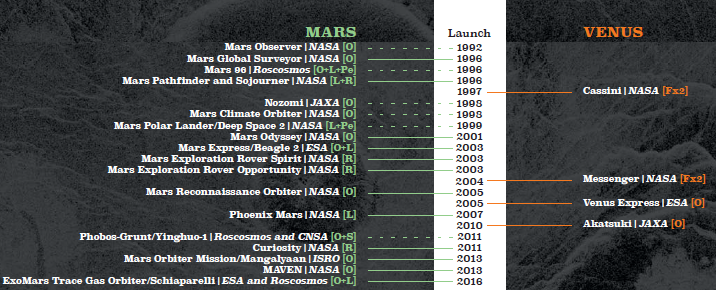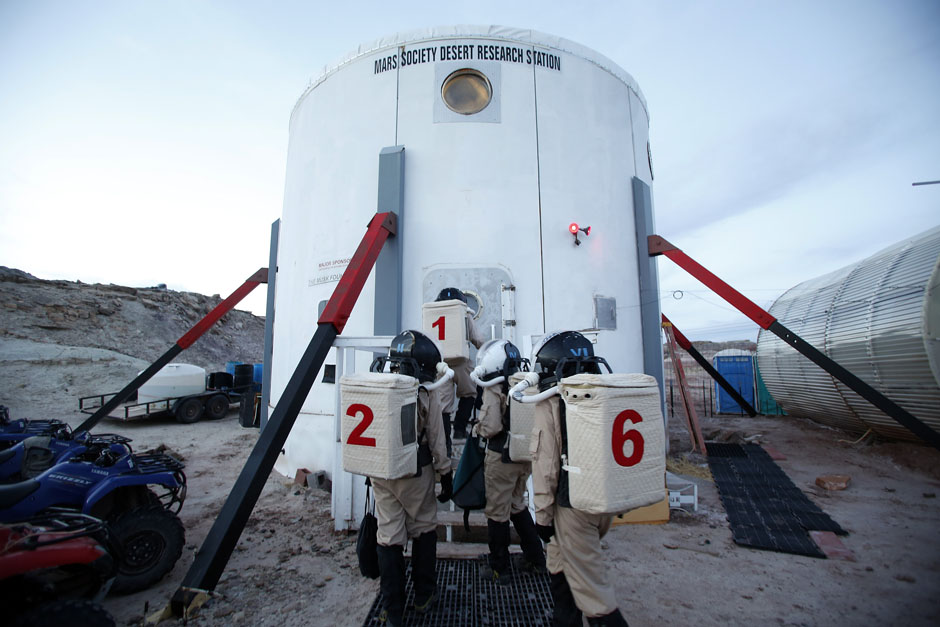For a long time the possibility of a complex life, even a civilization, on another planet seemed like a probable hypothesis to the population and scientists. The Venus-Mars duality appears because even if the “channels” (actually canyons) of Mars suggested that it is home to builders, the eternal clouds of Venus let the imagination work. A literary genre developed in the first half of the 20th century on the conviction that life exists on these two planets.

This search for life is a powerful engine for exploration because it allows humanity to feel less alone in the universe and would allow us to move forward on the question of our origins. The popular science and generalist media are therefore very fond of space missions. The various stages such as the take-off, landing and end-of-life of the probe give rise to reports or articles. Most of the time, when it is a scientific discovery, it is present as being possible due to the existence of a life form. By playing on the dream of the population to see extraterrestrial life, but having no definitive proof, this maintains the mystery. With this real scientific serial, the public is kept in suspense and will tend to be more favorable to ever more ambitious missions.
The first missions in the 1960s quickly proved that a complex life form similar to that present on Earth could not exist in the solar system. However, further studies suggest that near-Earth conditions, thus conducive to life, were present billions of years ago on the Earth’s two neighbors. However, on Venus the resurfacing would have removed all traces of soil of the time and thus destroyed any traces of life. On Mars, the geology is much more stable and traces of life may have been preserved. So things changed dramatically in the 1990s. From 1992 to 2018, 19 missions including 13 American missions with orbiters, landers and rovers were sent to Mars against 2 orbiters to Venus.

Cinema feeds on dreams of manned exploration and places the viewer in the shoes of an astronaut travelling to another world. Again, the conditions between Mars and Venus are very different. Indeed, apart from wearing a space suit outside the habitats, life on Mars is presented as very similar to life in a desert (where films are shot). However on Venus, reaching the surface is impossible with current technologies. At first, one can live in vast habitat floating in the clouds, which is far from familiar to the public and difficult to reproduce for the film crews. Thus, there is a big difference in film production between Mars and Venus. According to Wikipedia, since the 1970s, a single film (low-budget shot in black and white), a series and a docufiction (which both explores the entire solar system) presents a manned mission on Venus. By comparison, 24 films are set on Mars including Hollywood blockbusters and at least 6 TV series and docufiction.

The disparity in treatment between the red planet and the rest of the solar system makes future manned exploration on Mars seem obvious. The media are therefore surfing, on any technological advance in space to present it as a step closer to Mars. Similarly many astronaut interviews end with a question about his willingness and the time to go to the red planet. Knowing that Mars is by far the most famous planet, the young space agencies wishing to make a name for themselves, are almost obliged to send a probe there even if the star is already heavily scrutinized. It is therefore not surprising to see the majority of people interested in Mars, whether they know the space or not. Driven by this passion, a large number of think tanks in space agencies, universities or associations have been formed to establish Martian manned exploration projects. So not a month goes by without a new project being advanced, each time with different approaches or optimizations. Finally, information can be found on the internet on every detail of a Martian mission, from the sizing of re-entry vessels to the composition of meals, through radiation protections. These projects continue to maintain the image of a near Martian landing and give ideas to the filmmakers who produce films, creating a loop that maintains the passion for this planet.

There is no such virtuous circle for Venus. In the absence of sufficient missions, the media do not talk about it much, so the public is not interested. This lack of interest combined with the atypical nature of Venusian exploration (atmospheric base camp) means that there is almost no study of manned missions. Without being able to project himself into an astronaut exploring Venus, there is no film on the subject and the passion does not spread. Since we don’t talk about it, Venus is forgotten and today the public often believes that Mars is the closest planet to Earth in terms of distance and characteristics.